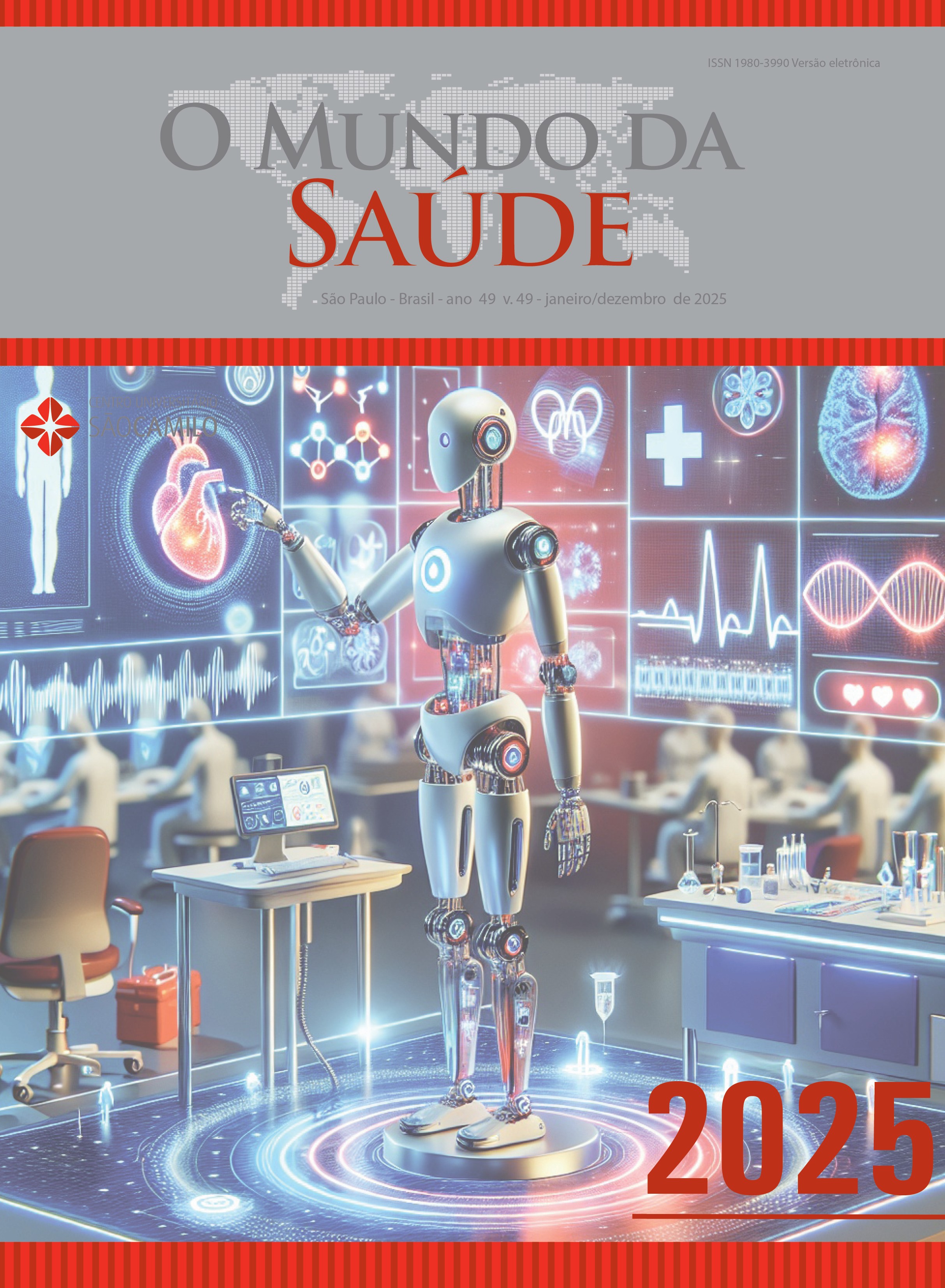Lead levels in teeth of inhabitants near a river contaminated with heavy metals: pilot study
DOI:
https://doi.org/10.15343/0104-7809.202549e16772024IKeywords:
Teeth, Lead, Environmental ContaminationAbstract
The objective of this study was measured the concentration of lead in teeth of patients from health establishments near the Coata River in Puno, Peru. This descriptive design study was approved by the Institutional Research Ethics Committee of the Universidad Nacional del Altiplano. The concentration of lead (Pb) in permanent teeth was assessed in 33 patients of both sexes which were donated as a result of planned extractions in the dental offices of the health establishments near the Coata River with prior informed consent. The concentration of Pb in teeth was measured with a Plasma Atomic Emission Spectrophotometer in the environmental monitoring and evaluation laboratory of the Faculty of Mining Engineering of the National University of the Altiplano Puno. The age range in Coata was 36 to 65 years and in Huata 35 to 63 years.The average age of the sample in the Coata district was 47.5 years and in Huata it was 47.6 years. The people living near the Coata River had a Pb concentration mostly in the range of 0.46 - 0.92 ug/g; and it was the men who had higher concentrations than women, without this difference being significant. It is concluded that teeth can be useful to determine Pb concentration due to chronic environmental exposure.
Downloads
Translations of this article
References
Briffa J, Sinagra E, Blundell R. Heavy metal pollution in the environment and their toxicological effects on humans. Heliyon. 2020; 6. doi:10.1016/j. heliyon.2020.e04691.
Hauptman M, Bruccoleri R, Woolf AD. An Update on Childhood Lead Poisoning. Clin Pediatr Emerg Med 2017; 18: 181.
Barton HJ. Advantages of the Use of Deciduous Teeth, Hair, and Blood Analysis for Lead and Cadmium Bio-Monitoring in Children. A Study of 6-Year Old Children from Krakow (Poland). Biol Trace Elem Res 2011; 143: 637.
Shepherd TJ, Dirks W, Manmee C, Hodgson S, Banks DA, Averley P et al. Reconstructing the life-time lead exposure in children using dentine in deciduous teeth. Science of The Total Environment 2012; 425: 214–222.
Asaduzzaman K, Khandaker MU, Binti Baharudin NA, Amin YBM, Farook MS, Bradley DA et al. Heavy metals in human teeth dentine: A bio-indicator of metals exposure and environmental pollution. Chemosphere 2017; 176: 221–230.
Rădulescu A, Lundgren S. A pharmacokinetic model of lead absorption and calcium competitive dynamics. Sci Rep 2019; 9. doi:10.1038/S41598-019- 50654-7.
Wani AL, Ara A, Usmani JA. Lead toxicity: a review. Interdiscip Toxicol 2015; 8: 55.
Obeng-Gyasi E. Sources of lead exposure in various countries. Rev Environ Health 2019; 34: 25–34.
OBELA. La contaminación del agua en la minería. Observatorio Económico Latinoamericano OBELA. 2021.https://www.obela.org/analisis/la contaminacion-del-agua-en-la-mineria (accessed 13 May2024).
Osores F, Rojas JE, Lara CHM. Minería informal e ilegal y contaminación con mercurio en Madre de Dios: Un problema de salud pública. Acta Médica Peruana 2012; 29.http://www.scielo.org.pe/scielo.php?script=sci_arttext&pid=S1728-59172012000100012 (accessed 13 May2024).
Quispe-Mamani E, Chaiña Chura F, Salas Avila D, Belizario Quispe G. Imaginario social de actores locales sobre la contaminación ambiental minera en el altiplano peruano. Rev Cienc Soc 2022; 28: 303–321.
López-Costas O, Kylander M, Mattielli N, Álvarez-Fernández N, Pérez-Rodríguez M, Mighall T et al. Human bones tell the story of atmospheric mercury and lead exposure at the edge of Roman World. Science of The Total Environment 2020; 710: 136319.
Havens D, Pham MH, Karr CJ, Daniell WE. Blood Lead Levels and Risk Factors for Lead Exposure in a Pediatric Population in Ho Chi Minh City, Vietnam. Int J Environ Res Public Health 2018; 15. doi:10.3390/IJERPH15010093.
Domagalska J, Ćwieląg-Drabek M, Dziubanek G, Ulatowska N, Bortlik S, Piekut A. Teeth as an Indicator of the Environmental Exposure of Silesia Province’s Inhabitants in Poland to Metallic Trace Elements. Toxics 2024; 12. doi:10.3390/TOXICS12010090/S1.
Piekut A, Moskalenko O, Gut K. Can primary teeth be an indicator of the environmental exposure of children to heavy metals? Medycyna Środowiskowa 2018; 21: 18–23.
Kamberi B, Kocani F, Dragusha E. Teeth as Indicators of Environmental Pollution with Lead. J Environ Anal Toxicol 2012; 02. doi:10.4172/2161- 0525.1000118.
Bautista-Díaz ML, Victoria-Rodríguez E, Vargas-Estrella LB, Hernández-Chamosa CC. Pruebas estadísticas paramétricas y no paramétricas: su clasificación, objetivos y características. Educación y Salud Boletín Científico Instituto de Ciencias de la Salud Universidad Autónoma del Estado de Hidalgo 2020; 9: 78–81.
Budd P, Montgomery J, Evans J, Barreiro B. Human tooth enamel as a record of the comparative lead exposure of prehistoric and modern people. 2000.
Piekut A, Moskalenko O, Gut K. Can primary teeth be an indicator of the environmental exposure of children to heavy metals? Environmental Medicine 2018; 21: 18–23.
Hegde S, Sridhar M, Bolar DR, Arehalli Bhaskar S, Sanghavi MB. Relating tooth- and blood-lead levels in children residing near a zinc-lead smelter in India. Int J Paediatr Dent 2010; 20: 186–192.
Brudevold F, Steadman LT. The distribution of lead in human enamel. J Dent Res 1956; 35: 430–437.
World Health Organization. Lead poisoning. World Health Organization. 2024.https://www.who.int/news-room/fact-sheets/detail/lead-poisoning and-health#:~:text=Exposure%20to%20very%20high%20levels,intellectual%20disability%20and%20behavioural%20disorders. (accessed 27 Sep2024).
Kamberi B, Kqiku L, Hoxha V, Dragusha E, Expand A. Lead concentrations in teeth from people living in Kosovo and Austria. Coll Antropol 2011; 35: 79–82.
Moskalenko O, Marchwińska-Wyrwał E, Piekut A, Gut K, Ćwieląg-Drabek M. Lead in human teeth dentine as a bio-indicator of environmental exposure to lead. Environmental Medicine 2021; 23: 33–38.
Klotz K, Göen T. Human Biomonitoring of Lead Exposure. In: Lead – Its Effects on Environment and Health. De Gruyter, 2017, pp 99–122.
Martínez B. La Contaminación ambiental de la Cuenca del río Coata y los desafíos de la mesa de diálogo en Puno. Muqui.0rg. 2021.https://muqui. org/la-contaminacion-ambiental-de-la-cuenca-del-rio-coata-y-los-desafios-de-la-mesa-de-dialogo-en-puno/#_ftnref4 (accessed 23 Sep2024).
SERVINDI. Ratifican sentencia histórica sobre el río Coata. Servindi.org. 2024.https://www.servindi.org/actualidad-noticias/27/03/2024/ratifican sentencia-historica-sobre-el-rio-coata (accessed 27 Sep2024).
Al-Qattan SI, Elfawal MA. Significance of teeth lead accumulation in age estimation. J Forensic Leg Med 2010; 17: 325–328.
Fernández-Escudero AC, Legaz I, Prieto-Bonete G, López-Nicolás M, Maurandi-López A, Pérez-Cárceles MD. Aging and trace elements in human coronal tooth dentine. Sci Rep 2020; 10. doi:10.1038/s41598-020-66472-1.
Downloads
Published
How to Cite
Issue
Section
License
Copyright (c) 2025 O Mundo da Saúde

This work is licensed under a Creative Commons Attribution 4.0 International License.






























